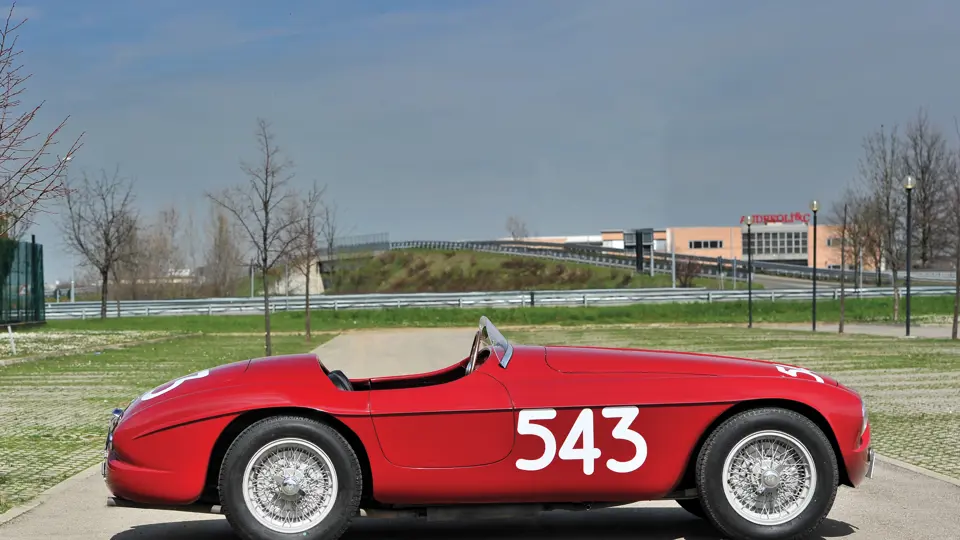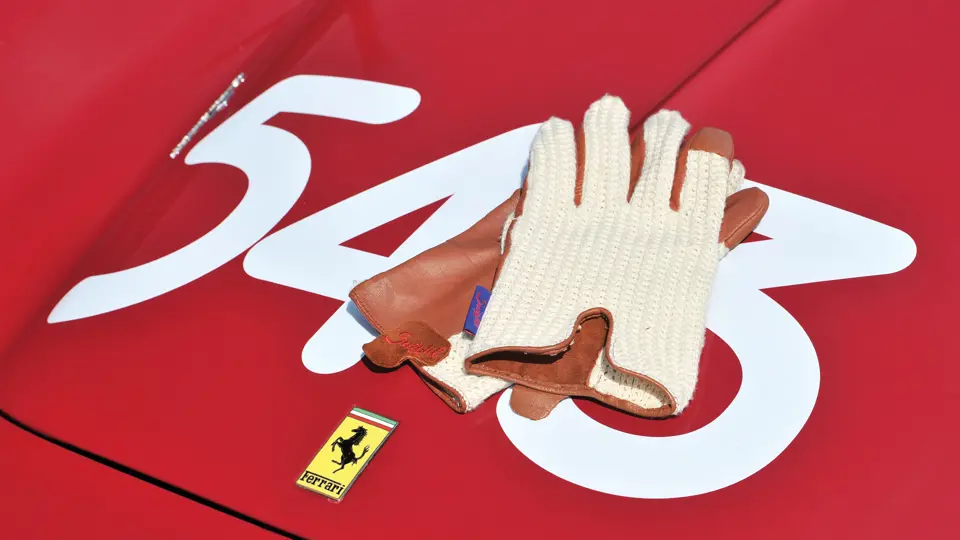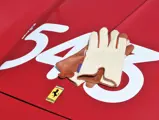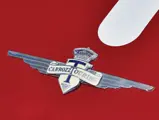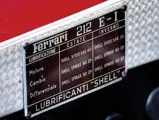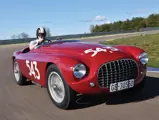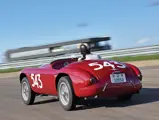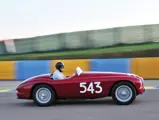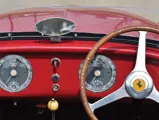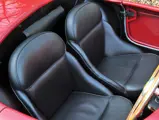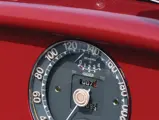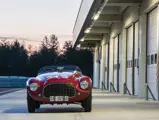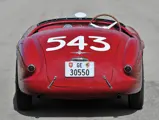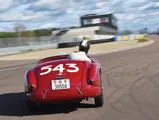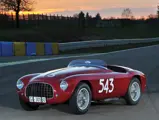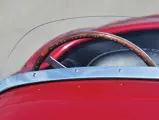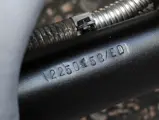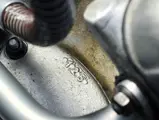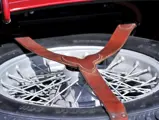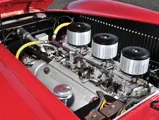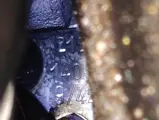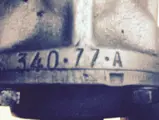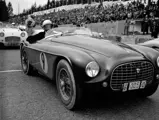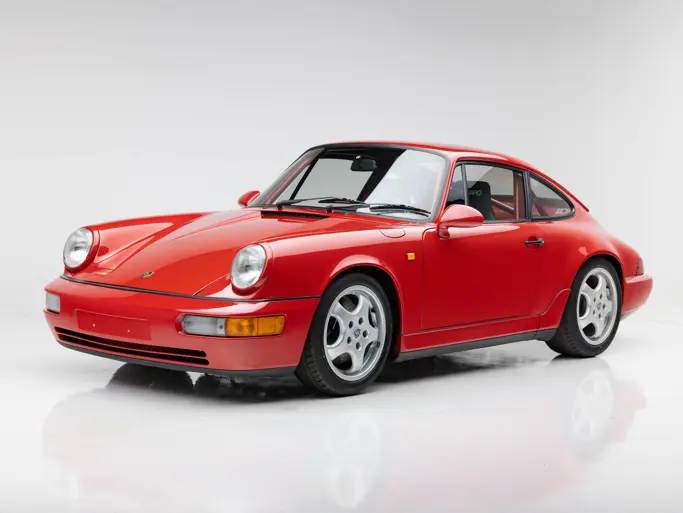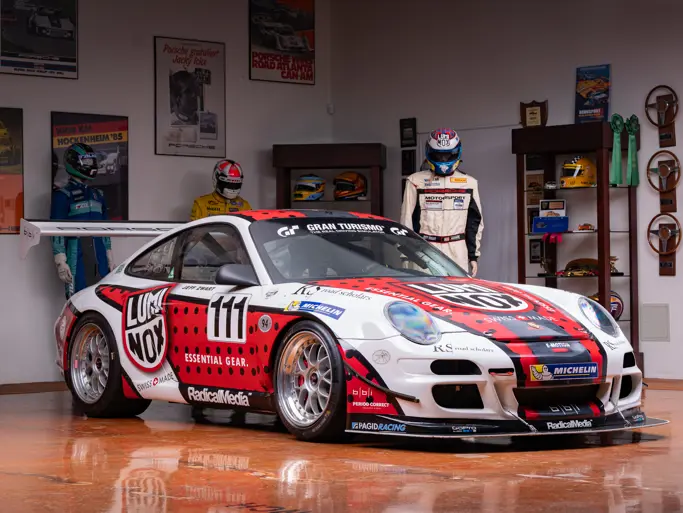
1952 Ferrari 212 Export Barchetta by Touring
{{lr.item.text}}
€6,720,000 EUR | Sold
{{bidding.lot.reserveStatusFormatted}}
- The last Touring-bodied 212 Export
- Targa Florio competitor in 1952 and 1953
- Entrant in the 1956 Mille Miglia
- Highly eligible for the world’s greatest historic events, including the Tour Auto, Mille Miglia, the Historic Monaco GP, and the Le Mans Classic
- Matching-numbers example; a spectacular early racing Ferrari
- Ferrari Classiche certified
- L’ultima 212 Export carrozzata da Touring
- Partecipante alla Targa Florio nel 1952 e 1953
- Partecipante alla Mille Miglia del 1956
- Eligibile alle più importanti manifestazioni per auto d’epoca, dal Tour Auto alla Mille Miglia, dal Monaco GP Classic alla Le Mans Classic
- Matching numbers, una delle più spettacolari Ferrari dei primi anni
- Certificata Ferrari Classiche
160 bhp, 2,562 cc Tipo 212 V-12 engine with three Weber 36 DCF carburettors, five-speed manual transmission, independent front suspension with double wishbones and a transverse leaf spring, rear solid axle with semi-elliptic leaf springs, and four-wheel drum brakes. Wheelbase: 2,250 mm
160 cv, motore di 2.562 cc Tipo 212 V-12 con tre carburatori Weber 36 DCF, cambio a 5 rapporti, sospensioni anteriori a ruote indipendenti, con doppio quadrilatero e balestra trasversale, posteriori con assale rigido con balestre semi ellittiche, 4 freni a tamburo. Passo: 2.250 mm
CHASSIS NUMBER 0158 ED: THE FINAL 212 EXPORT BY TOURING
Ferraris were campaigned frequently and with ferocity by both the factory and wealthy privateers, and the company’s reputation during its early days hinged on the success of its race cars. During these early years, Ferrari created a chassis numbering system that would create legends: the competition cars would be designated an even numbered chassis, whilst road going cars would receive odd chassis numbers. Whilst numerous road going “Inter” models would be built afterwards by Ferrari, this 212 Barchetta would be the final Touring-bodied, race-ready “Export” model built by the factory and fitted with the potent Tipo 212 engine. In today’s market, the “holy grail” for any tifosi is an even-numbered V-12 Barchetta, such as the Ferrari offered here.
Chassis 0158 ED remained in its native Italy for its formative years. It was purchased new by Baron Luigi Chiaramonte Bordonaro shortly after its completion and a factory road-test on 5 February 1952. Even in the earliest days of the company, Chiaramonte Bordonaro was already a previous Ferrari owner, as he had purchased a second-hand 166 Allemano Spider (chassis number 006I) in 1949, and he would go on to also own a 750 Monza (chassis number 0530M).
Like his 166, the Baron’s new 212 would be destined for the race track, with Chiaramonte Bordonaro campaigning the car in his native Italy from 1952 to 1955. After great success at the Corsa al Monte Pellegrino Hill Climb in April 1952, where he finished 1st overall, Chiaramonte Bordonaro entered his new car in one of the greatest motoring events in the world: the Targa Florio. For a privateer, his 10th overall and 5th in class finishes were incredibly impressive and a testament to Chiaramonte Bordonaro’s skill behind the wheel of his little red Barchetta.
The remainder of the 1952 season proved to be equally fruitful, with the following year starting off with 2nd in class and 7th overall finishes at the car’s second outing at the Giro di Sicilia. Chiaramonte Bordonaro then entered the Targa Florio again, finishing a respectable 16th place overall. Following a pair of 1st place finishes at the Coppa dei Templi and the Passo di Rigano-Bellolampo Hill Climb, Chiaramonte Bordonaro finished 3rd at the Circuito di Reggio di Calabria, and he would continue his winning ways at the VI Coppa Nissena Hill Climb on 27 September 1953. It is important to note that on 6 June 1952, the original Tipo 212 rear axle was replaced by a stronger Tipo 340 rear axle.
A minor accident to the rear end of the car during the Giro di Sicilia in April 1954 took 0158 ED out of contention for any major events that season. Nevertheless, the Ferrari returned to the track after it was repaired, and it was raced at the VI Gran Premio Pergusa in August, which was its last race of that year. Chassis 0158 ED returned for the 1955 season, and it remained competitive, earning one 4th in class and three 1st in class finishes before the end of the season.
Shortly thereafter, the car was sold to Edouard Margairuz, of Geneva, Switzerland, and registered as GE-30550. He continued to campaign it throughout 1956, with the car’s most notable outing that year being the Mille Miglia, where Edouard Margairuz was behind the wheel and Robert Gremaud was his navigator. However, after many competitive miles, the car did not finish. This did not discourage Margairuz though, and the Ferrari was campaigned in four more events under his name.
FROM THE RACE TRACK TO THE SHOW FIELD
After its retirement from racing, 0158 ED was exported to the United States, where it was purchased by noted enthusiast Chris Cord, of Beverly Hills, California. Cord then sold the Barchetta to Ferrari collector Art Connell, of Pebble Beach. It is believed that whilst the car was in Connell’s ownership, Robert T. Devlin showed it on his behalf at the Pebble Beach Concours d’Elegance in both 1965 and 1966, taking a Second Place award in 1966.
Stephen Griswold, the owner of a Ferrari, Alfa Romeo, and Aston Martin dealership in Berkley, California, purchased 0158 ED from Art Connell and completed a full restoration. Subsequently, it was shown at the 1973 San Francisco Import Show, along with a brand-new 246 Dino GTS and a 365 GTC/4, to show how much Ferrari had changed over the past 20 years. Griswold took the 212 back to Pebble Beach in 1973 and 1974, where it once again received a Second Place (1973) and won the Hans Tanner Trophy (1974). The following year, Griswold elected to skip the concours and instead raced his 212 at the second annual Monterey Historic Automobile Races at Laguna Seca. A year later, Griswold sold the car to Henry Smith, and it was later purchased by Joseph J. Pendergast, of Tampa, Florida.
Pendergast was an active member of the Ferrari Club of America and showed the car at a number of FCA events, including the 13th Annual National Meeting in St. Louis, Missouri, and the FCA Regional Meet at Lake Lanier Island in Georgia in 1976. The next year, Pendergast returned to the FCA National Meeting in Watkins Glen and also appeared at the FCA Florida regional event at Daytona and Disney World. June 1978 heralded the car’s third showing at an FCA National Meeting at Road Atlanta in Georgia.
In 1990, chassis 0158 ED was purchased by Juan Quintano of Ferrari Espanola in Madrid, Spain, and it would remain there for the next six years. It was then acquired by Ferrari collector Carlos Monteverde, of London, England, who owned the car briefly. The Barchetta was shown at Cavallino Classic in Palm Beach, Florida, in 1998 before it was attained by William Jacobs Jr., of Joliet, Illinois. Jacobs drove the car on the Colorado 1000 in 1998, 1999, and 2007. He also chose to return the car to the show field, where it was once again presented at Pebble Beach in 2001, as well as at the Amelia Island Concours d’Elegance in 2006.
Chassis 0158 ED currently resides in its adopted home of Southern California, and it remains one of the finest examples of its kind. Whilst many early Ferraris were campaigned hard early in their lives, few emerged largely unscathed from the rigors of competition. It is important to note that 0158 ED retains its original engine, gearbox, and axle. It has already proven itself capable of winning awards at some of the most competitive concours events on the planet, and it holds its own on historic rallies.
For many tifosi, ownership of an early, even-numbered chassis, V-12 Barchetta is a long-time goal, as they represent the purest incarnation of Enzo Ferrari’s dream. They were built and bred for racing, and they not only excelled on the track but also helped increase Ferrari’s reputation as a dominate force. This example is surely one of the best of its kind, and it is ready for use at concours events, rallies, and historic racing worldwide. As 0158 ED is a highly eligible Ferrari V-12 Barchetta, it is guaranteed entry at the Le Mans Classic, Mille Miglia, Tour Auto, Goodwood, and Monaco Historic Grand Prix.
Ultimately, it would be a spectacular addition to any significant collection.
TELAIO NUMERO 0158 ED: L’ULTIMA 212 EXPORT REALIZZATA DA TOURING
Le Ferrari correvano spesso, con il massimo impegno, iscritte sia direttamente dalla Ferrari che dai ricchi clienti perchè, in questi primi anni di vita, la reputazione del marchio era strettamente legata ai successi ottenuti nelle corse. E’ proprio in questo periodo che Ferrari crea il sistema di numerazione dei telai che entrerà nella leggenda, con i numeri pari assegnati alle vetture da corsa e quelli dispari legati alle vetture stradali. Sebbene Ferrari successivamente realizzerà numerosi esemplari stradali con la denominazione “Inter”, questa 212 è l’ultima costruita con carrozzeria Touring, nella versione da corsa “Export”, equipaggiata con il potente motore del Tipo 212. Nel mercato attuale, il sogno proibito di ogni collezionista è proprio una barchetta sport con no di telaio pari e motore V-12, esattamente come la Ferrari offerta qui.
Il telaio 0158 ED è stato venduto nuovo in Italia, comprato dal Barone Luigi Chiaramonte Bordonaro appena dopo il suo assemblaggio ed il test su strada compiuto dalla fabbrica in data 5 Febbraio 1952. Sebbene fossimo ancora nei primissimi anni di vita della Ferrari, Chiaramonte Bordonaro era già un cliente della casa, visto che nel 1949 aveva comprato una 166 Allemano Spider (telaio numero 0061) usata, ed in futuro comprerà anche una 750 Monza (telaio numero 0530M).
Come la sua precedente 166, anche la nuova 212 sarebbe stata destinata alle competizioni, visto che il barone Chiaramonte Bordonaro l’avrebbe fatta correre in Italia dal 1952 al 1955. Dopo il grande successo alla corsa in salita del Monte Pellegrino dell’Aprile del 1952, dove ha terminato primo assoluto, Chiaramonte Bordonaro ha iscritto la sua nuova macchina anche ad uno degli eventi motoristici più importanti del mondo: la Targa Florio. Per un privato il decimo posto assoluto, ed il quinto di classe, è un risultato spettacolare, testimonianza delle capacità di guida di Chiaramonte Bordonaro al volante della sua piccola, rossa, Barchetta.
Il resto della stagione 1952 si dimostrerà altrettanto fruttuosa, mentre la stagione successiva comincerà con il secondo posto di classe ed il settimo posto assoluto alla seconda partecipazione del Giro di Sicilia. Chiaramonte Bordonaro partecipa nuovamente anche alla Targa Florio, classificandosi sedicesimo assoluto. Dopo un paio di successi alla Coppa dei Templi ed alla Passo di Rigano – Bellolampo, entrambe gare in salita, Chiaramonte Bordonaro termina terzo al Circuito di Reggio Calabria e continuerà la serie delle vittorie classificandosi primo alla gara in salita VI Coppa Nissena del 27 Settembre 1953. E’ importante notare che il 6 Giugno 1952 alla macchina viene sostituito il ponte posteriore originale del Tipo 212, con uno, più robusto, del Tipo 340.
Un leggero incidente durante il Giro di Sicilia dell’Aprile del 1954 danneggia la parte posteriore, e costringe 0158 ED a restare fuori dai giochi per alcune gare, prima di essere riparata e tornare in corsa disputando l’ultima sua gara per quell’anno, il VI Gran Premio di Pergusa disputato in Agosto. La stagione successiva, 1955, vede la barchetta 0158 ED rimanere competitiva, con la conquista di un quarto posto di classe e tre vittorie di classe prima della fine dell’anno.
Poco dopo la macchina viene venduta a Edouard Margairuz, di Ginevra, Svizzera, e targata GE-30550. Margairuz continua a far correre la macchina per tutta la stagione 1956, iscrivendola anche alla corsa più prestigiosa, la Mille Miglia, dove lui pilota e Robert Gremaud fa da co-pilota. La vettura, dopo aver comunque mostrato le sue doti velocistiche, si deve ritirare. Questo non scoraggia Margairuz e la Ferrari viene iscritta ad ulteriori quattro gare prima della fine dell’anno.
DAI CIRCUITI AI CONCORSI DI ELEGANZA
Dopo il ritiro dalle competizioni, la barchetta 0158 ED è stata esportata negli Stati Uniti, dove viene acquistata dal noto appassionato Chris Cord di Beverly Hills, California, che la rivende al collezionista Ferrari Art Connell di Pebble Beach. Si ritiene che sia durante la proprietà di Connell, che la macchina è esposta in sua vece da Robert T. Devlin, al Concorso di Eleganza di Pebble Beach sia nel 1965 che nel 1966, anno in cui la 212 ottiene il Secondo Posto.
E’ Stephen Griswold, proprietario di una concessionaria Ferrari, Alfa Romeo ed Aston Martin a Berkley, California, che acquista la 212 0158 ED da Art Connell e la sottopone ad un restauro completo. In seguito la espone al San Francisco Import Show del 1973, assieme a due nuovissime Dino 246 GTS e 365 GTC/4, per far vedere come lo stile Ferrari sia cambiato nel corso degli ultimi 20 anni. Griswold riporta la 212 a Pebble Beach dove ottiene un altro Secondo Posto (1973) e vince il trofeo Hans Tanner (1974). L’anno successivo Griswold decide di non partecipare al concorso, ma di iscrivere la macchina alla seconda edizione della Monterey Historic Automobile Races di Laguna Seca. L’anno dopo Griswold vende la 212 a Harry Smith, che a sua volta cede la macchina a Joseph J. Pendergast, di Tampa, Florida.
Pendergast è uno dei membri più attivi del Ferrari Club of America e mostra la 212 ad un numero infinito di raduni organizzati dal Club, tra cui il tredicesimo Annual National Meeting di St. Louis, Missouri, ed il FCA Regional Meet che si tiene a Lake Lanier Island in Georgia nel 1976. L’anno successivo Pendergast riporta la 212 al FCA National Meeting di Watkins Glen ed ai raduni organizzati dalla sezione del Club della Florida sia a Daytona che a Disney World. Il Giugno del 1978 vede la terza partecipazione della macchina al FCA National Meeting di Road Atlanta in Georgia.
Nel 1990, la Ferrari 212 0158 ED viene comprata da Juan Quintano della Ferrari Espanola di Madrid, Spagna, che la terrà per i successivi 6 anni, prima di diventare proprietà, per un breve periodo di tempo, del collezionista Ferrari Carlos Monteverde, di Londra, Inghilterra. La Barchetta viene quindi esposta al concorso del Cavallino Classic di Palm Beach, Florida, nel 1998, prima di essere ceduta a William Jacobs Jr., di Joliet, Illinois. Jacobs guida la vettura alla Colorado 1000 del 1998 del 1999 e del 2007 e decide di riportarla ai concorsi, tra cui, ancora una volta a Pebble Beach nel 2001, così come al Concorso di Eleganza di Amelia Island del 2006.
Ancora oggi il telaio 0158 ED abita nella sua terra adottiva del Sud della California e rimane uno dei migliori esempi della sua specie. Mentre la maggioranza delle prime Ferrari sono state intensivamente utilizzate nelle corse, molte poche sono uscite indenni dai rigori delle competizioni. E’ a questo punto importante notare che 0158 ED utilizza ancora il suo motore, cambio e ponte originali ed ha dimostrato di poter vincere importanti riconoscimenti anche nei più rinomati concorsi di auto d’epoca del mondo, oltre che di sapersi ben comportare nelle più impegnative manifestazioni stradali.
Per molti appassionati entrare in possesso si una delle prime Barchetta V-12, con numero di telaio pari, è uno dei desideri più ambiti, perché sono queste le vetture che rappresentano la più pura incarnazione del sogno di Enzo Ferrari. Sono state sviluppate e prodotte per correre e non solo hanno vinto, ma hanno costruito la reputazione Ferrari di marchio vincente. Questo esemplare è senz’altro uno dei migliori rimasti in circolazione, pronto per essere usato ai concorsi, nelle corse in circuito o nei raduni stradali, che si tengono in tutto il mondo. Non solo, vista la sua storia, la Ferrari V-12 Barchetta 0158 ED è altamente qualificata per essere facilmente iscritta ed accettata alla Le Mans Classic, alla Mille Miglia, al Tour Auto, a Goodwood, o al Monaco Historic Grand Prix.
In conclusione, sarebbe un’aggiunta spettacolare in qualsiasi collezione, anche la più importante.


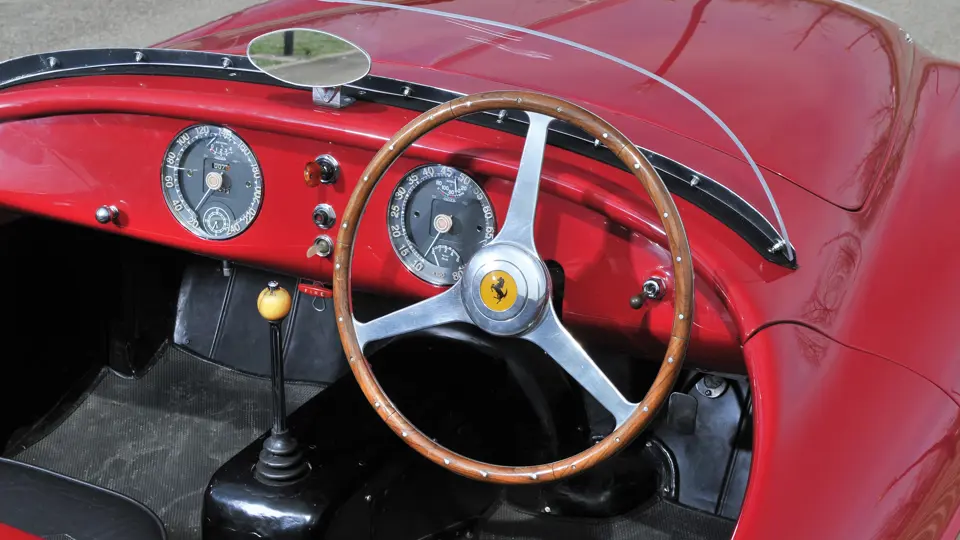

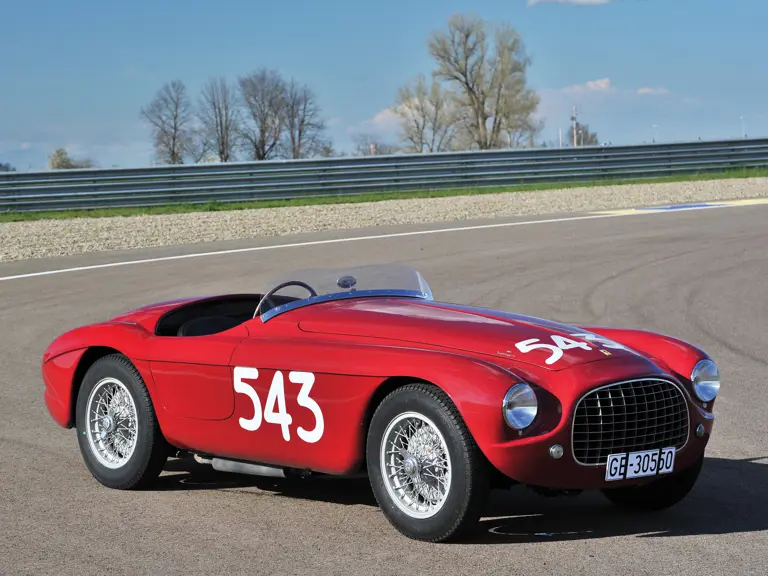
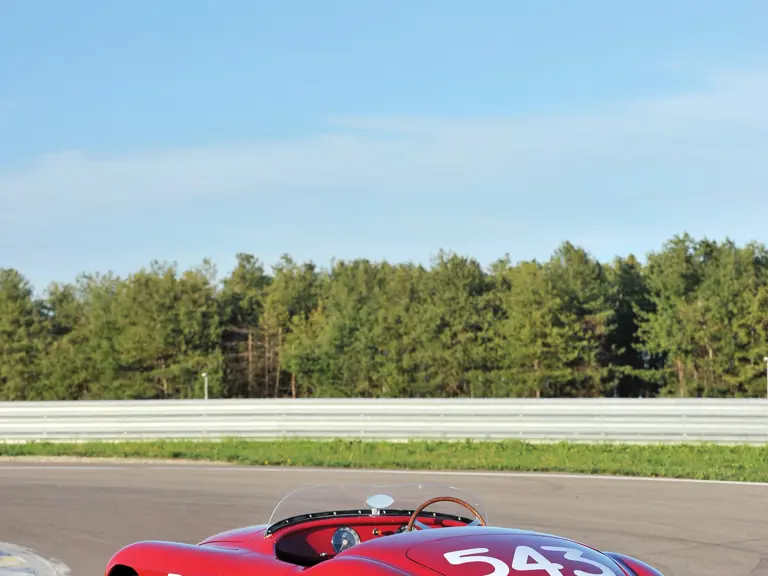
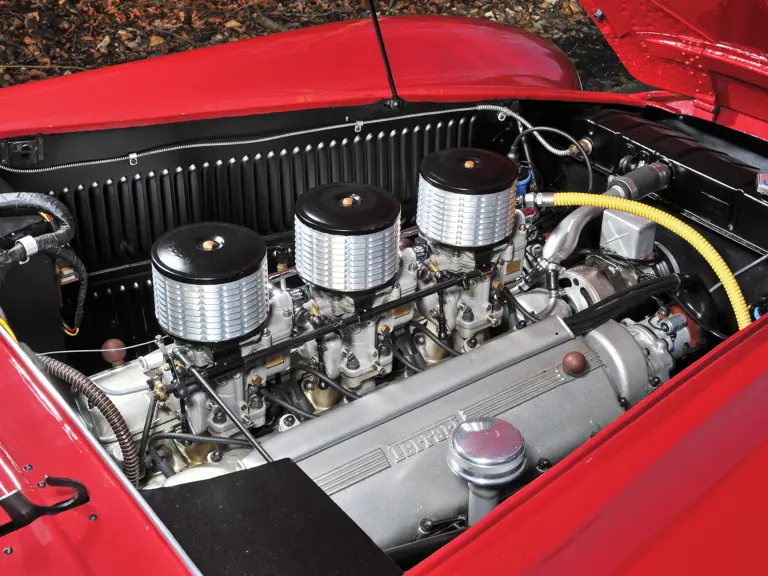
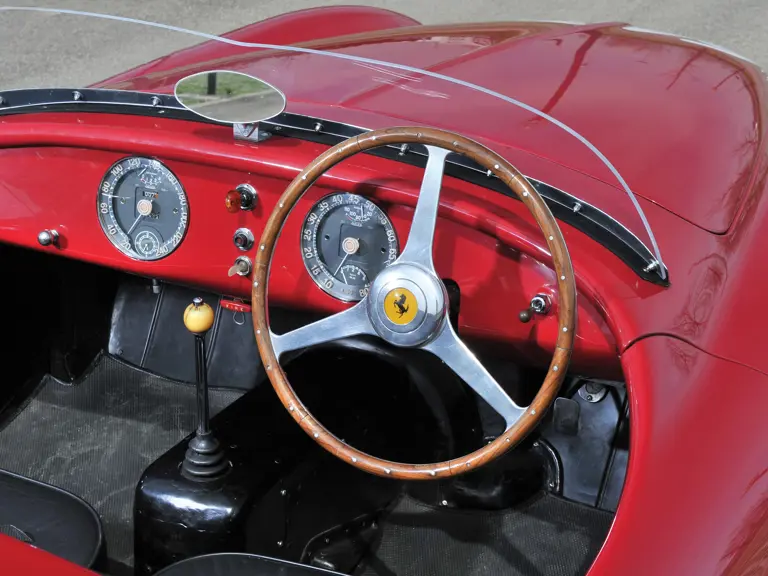
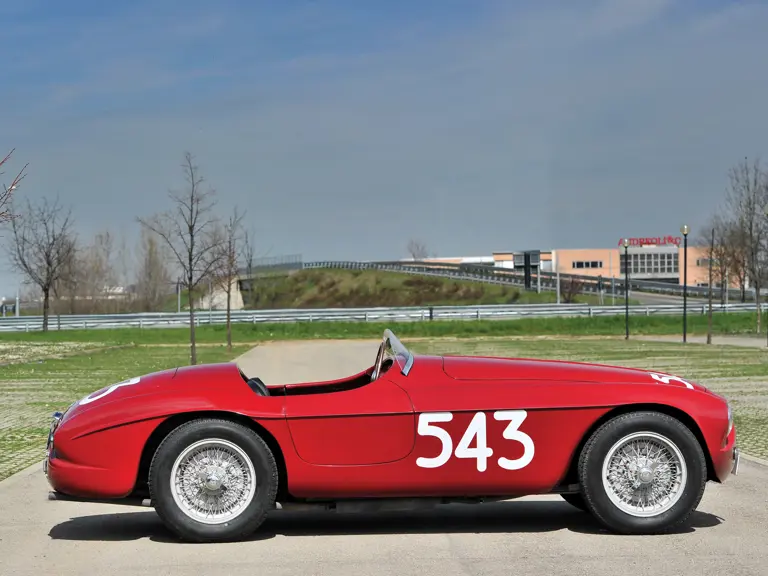

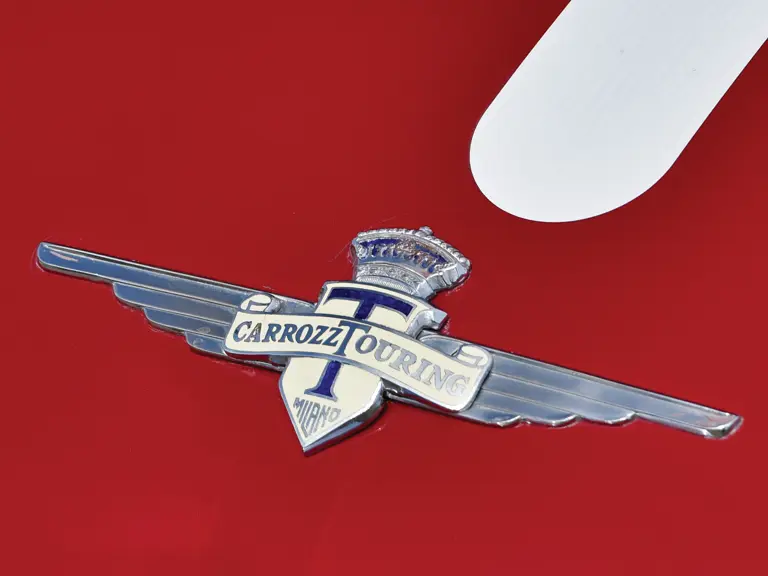
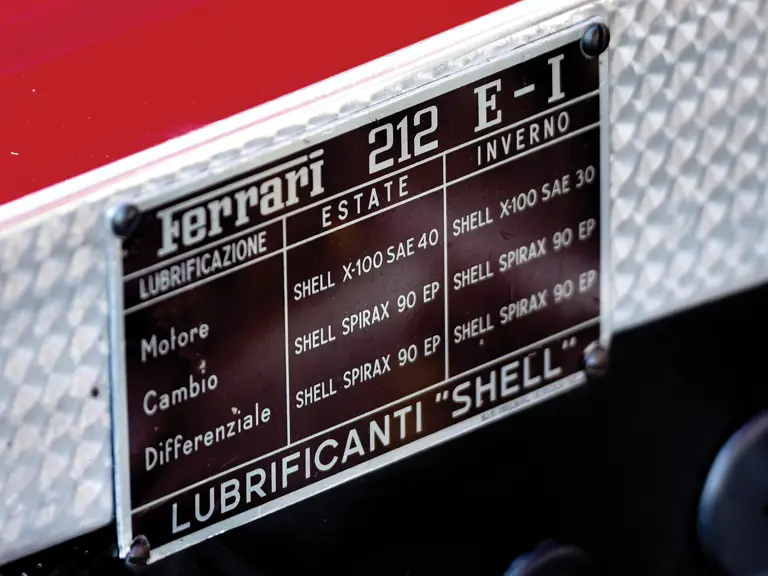
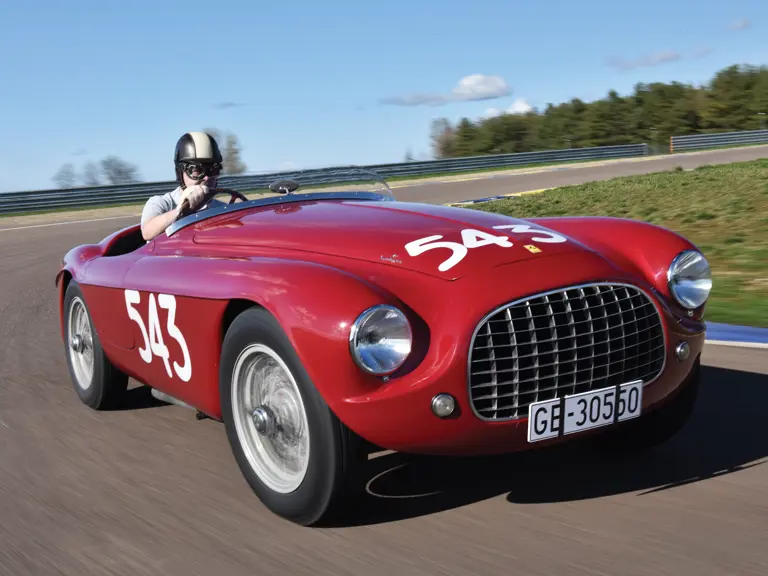
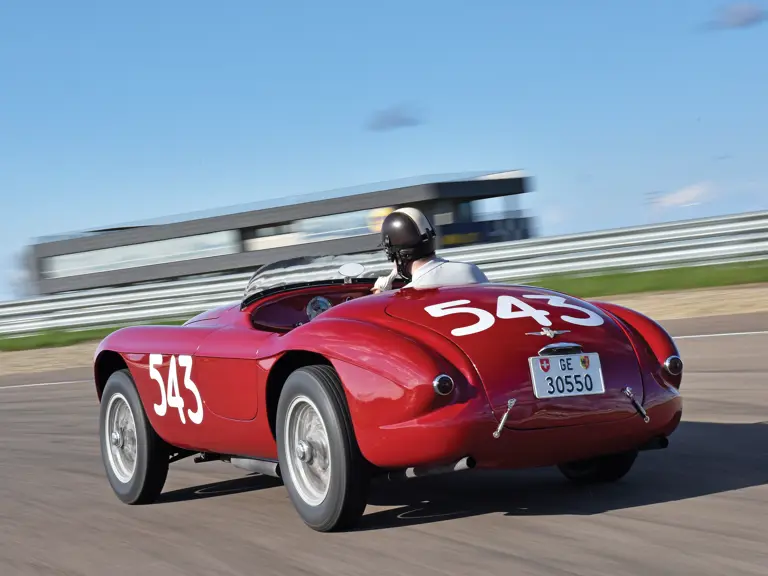
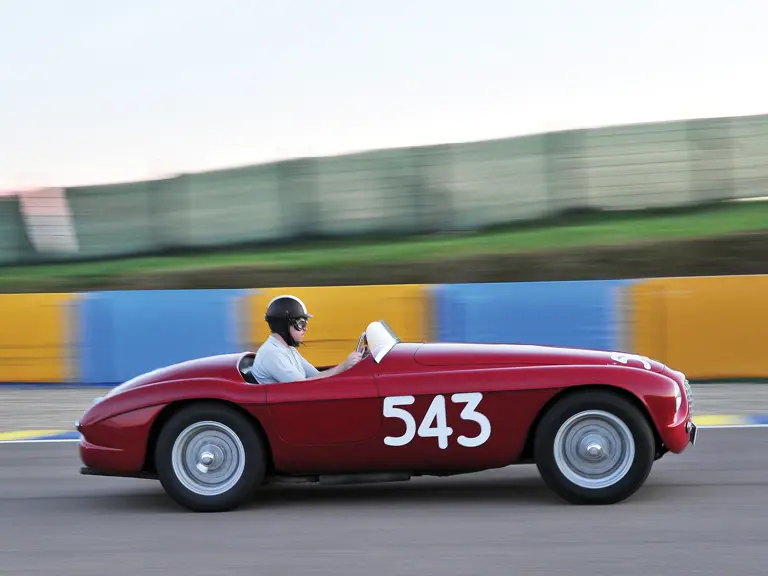
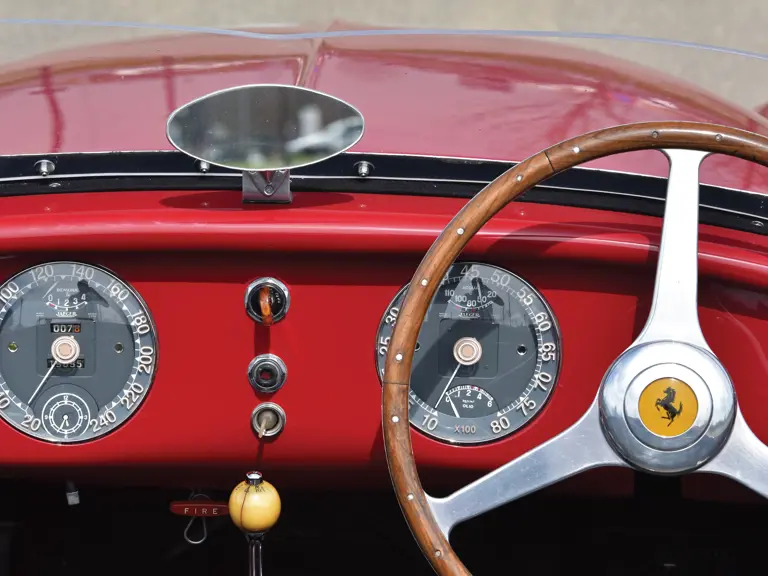

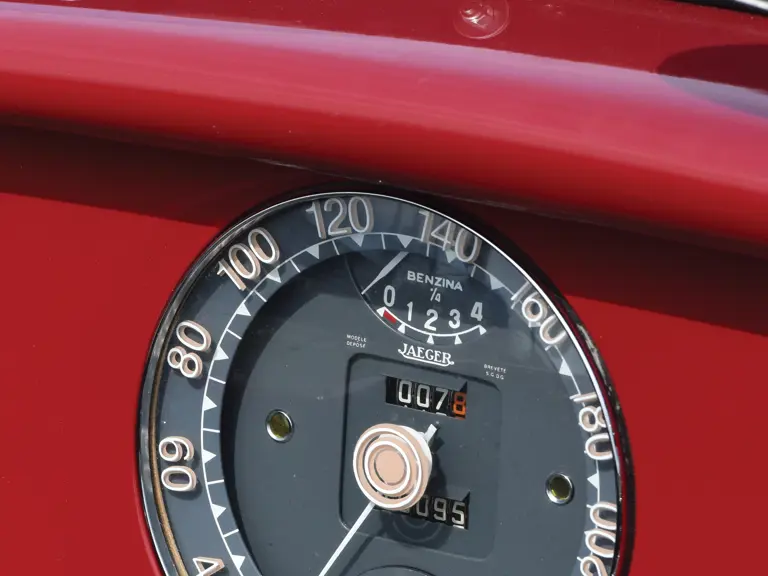


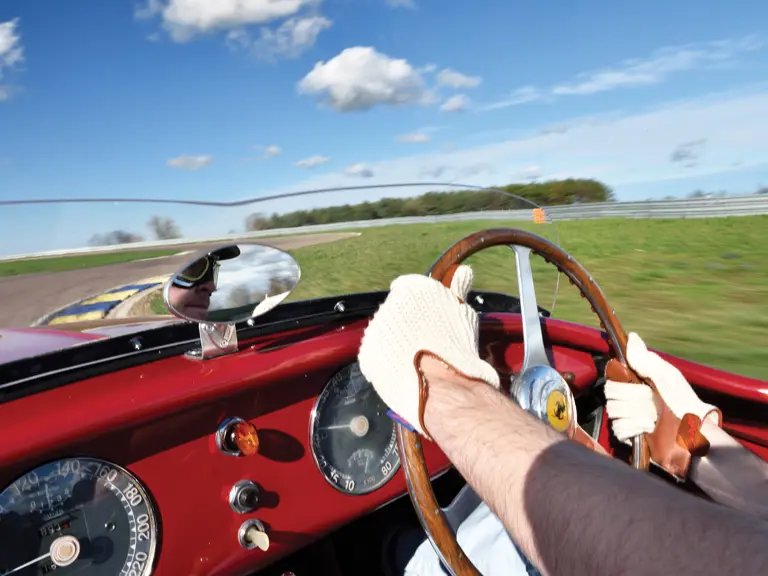

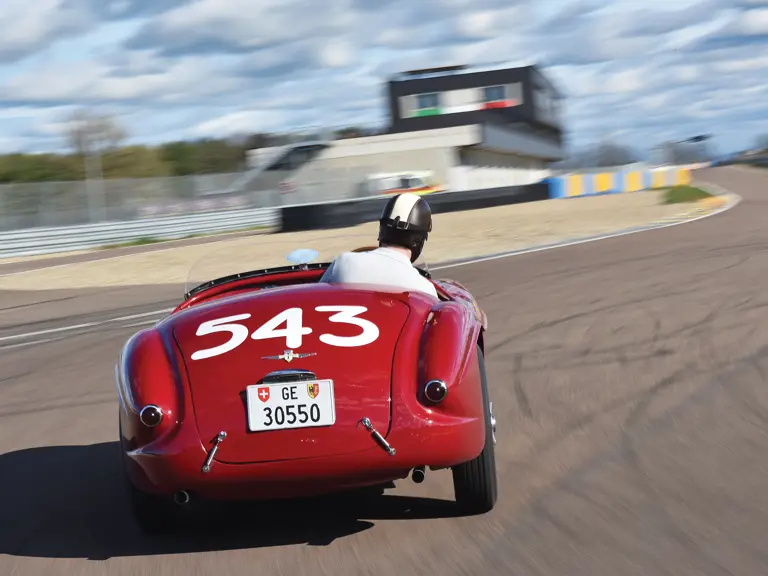

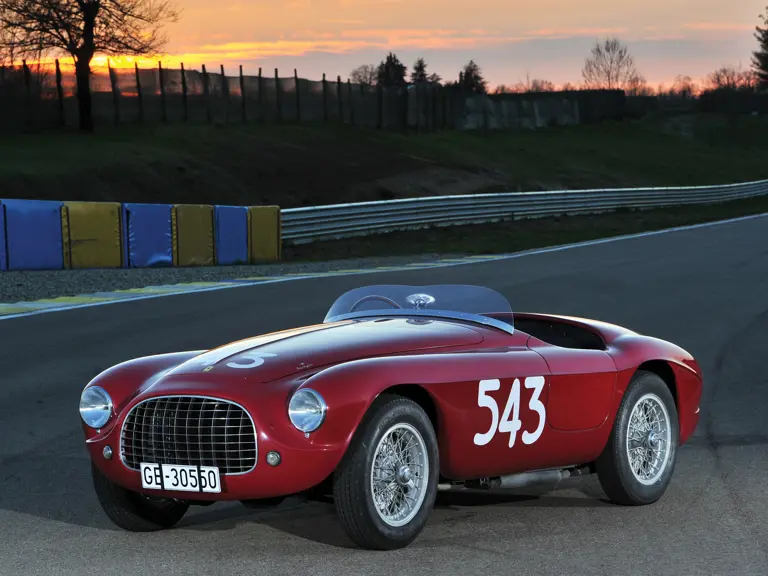

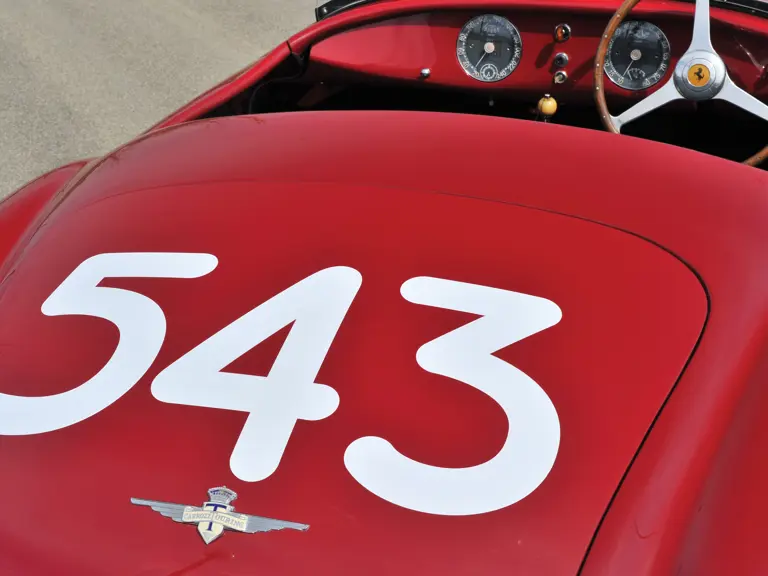
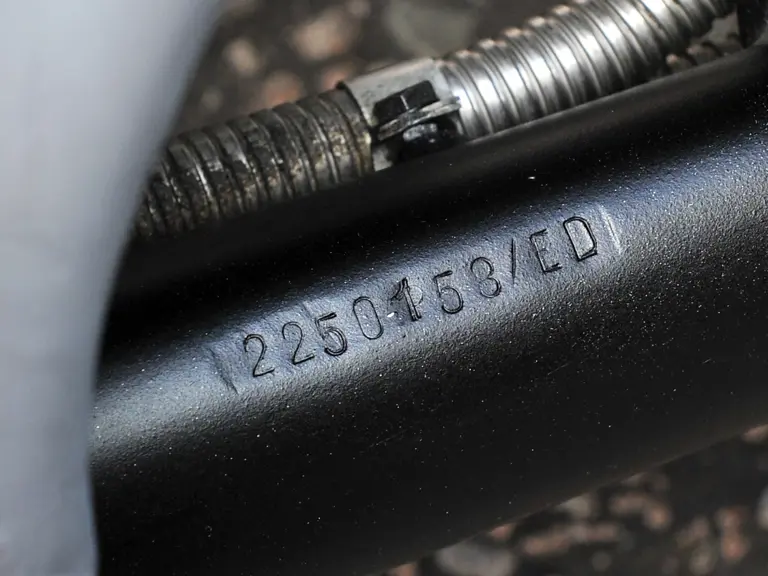
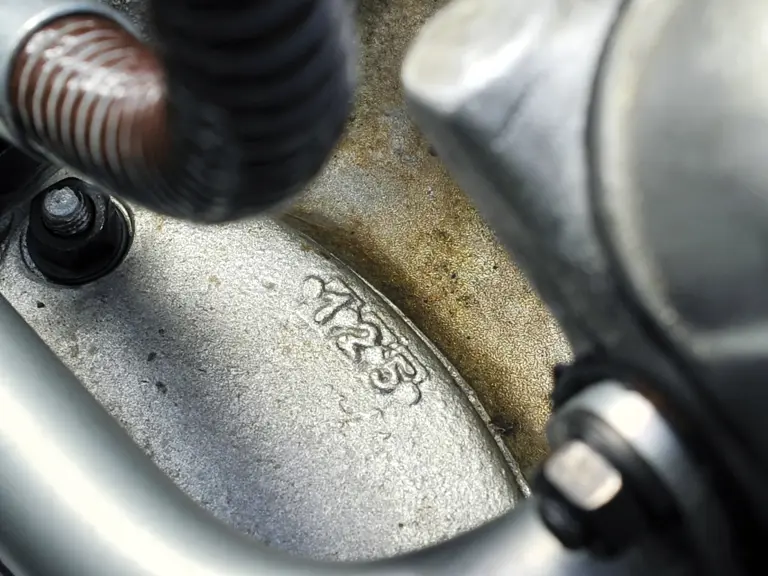
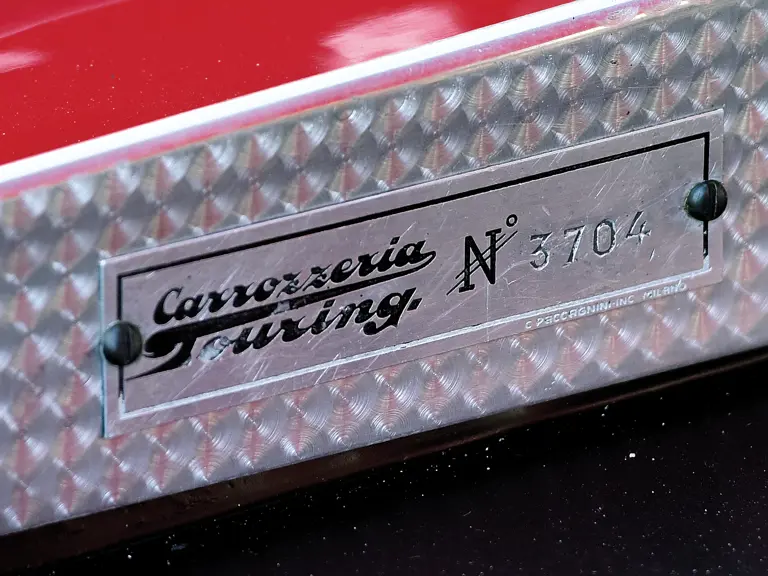
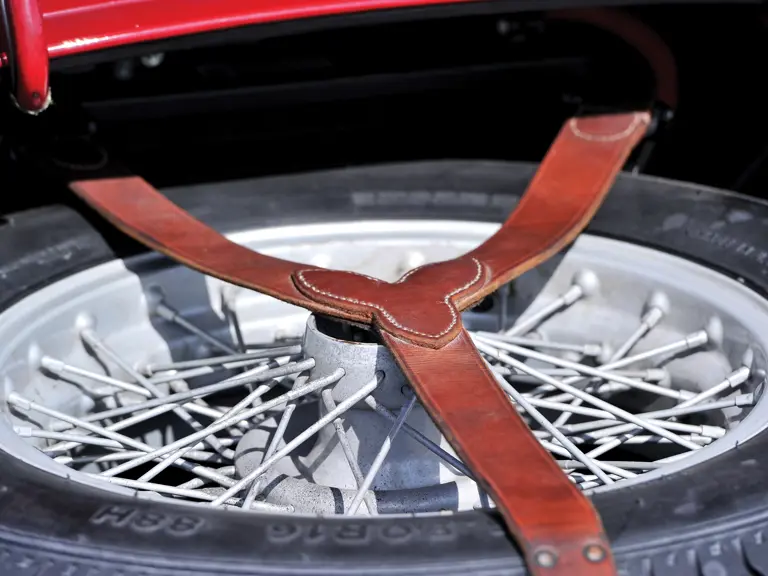
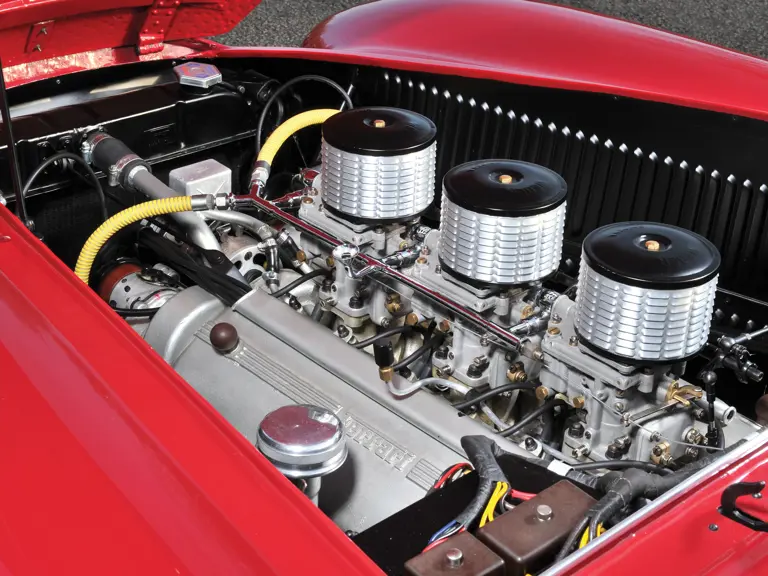
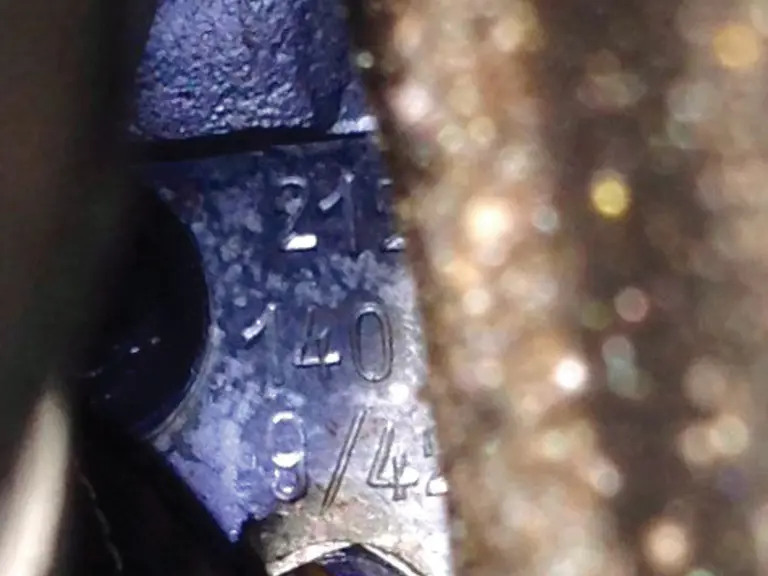
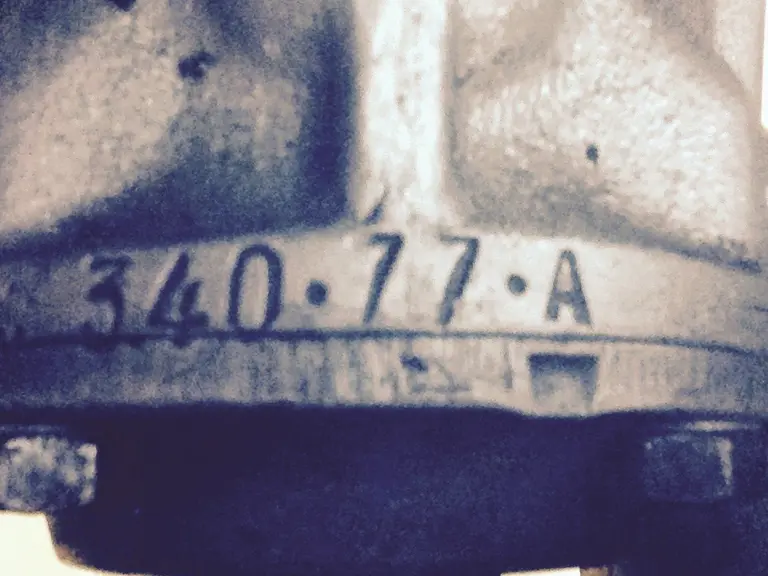
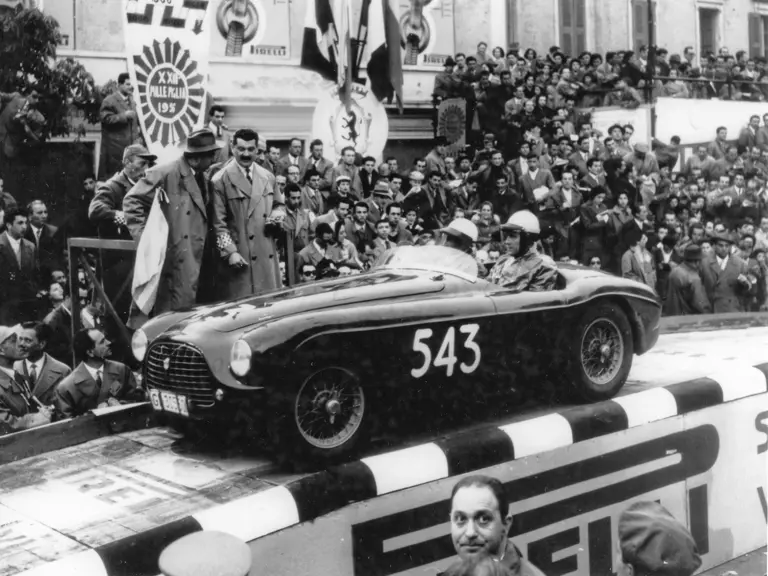
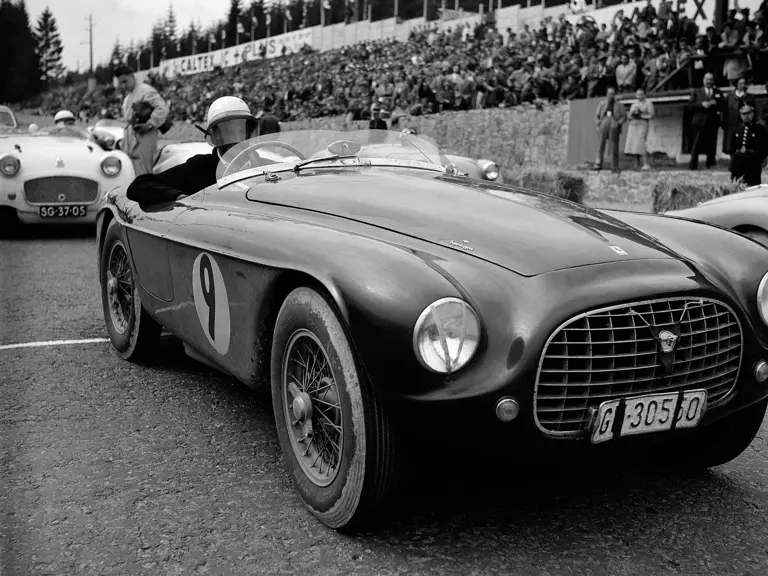
 | Cernobbio, Italy
| Cernobbio, Italy
